This new video tips its hat to the architect Marcel Breuer and how his ideas took shape in the building, as well as The Met's restorations and its program of exhibitions.
Right about now, all conversations seem bookended with references to "this moment." It feels all-encompassing.
But sometimes our minds sneak off elsewhere, to the land of "before." It's not an escape. Maybe more like seeking inspiration and energy for what's next. For me, go-to memories are often in rooms and buildings that provide a sense of suspended animation.
One in particular is Marcel Breuer's remarkable icon at 75th Street and Madison Avenue, the original site of The Whitney Museum of American Art. The Met completed a multiyear renovation in 2016, and then, over four very busy years, the building played host to thirty-one exhibitions and a variety of public programs under the leadership of Sheena Wagstaff, the Leonard A. Lauder Chairman of Modern and Contemporary Art. She designed this program, curated by the modern and contemporary art team, in collaboration with curatorial and conservation colleagues across the Museum. As an Executive Producer in the Digital Department, I lead a team creating audio and video content for audiences onsite and online. Together with colleagues across the Museum, we've collaborated on a variety of media for The Met Breuer. I've spent hours recording there. And now, The Met is now passing the building to The Frick Collection.
How do you say goodbye to a building? To the art, and to experience of seeing it in such a building, with its constellation of lights in the lobby, formidable walls, and trapezoid windows? Below, we invited several curators to reflect on how their exhibition designs were specifically in dialogue with the architecture. As another salute, we present an assortment of digital features to explore.
And if you like long goodbyes, we cordially invite you to dig deeper into The Met Breuer's archives, below.
In this 360° video of the building, I love the feeling of the camera flying over the bridge for a bird's eye view over the sunken garden, and then whooshing through the front doors.
Fancy a goodbye over dinner? Then listen to this podcast-style audio tour about the architect, his vision, and the history the building. My favorite bit? Hearing Breuer's own voice, which we discovered in an radio interview archived from the 1960s.
Or why not feed off of the hours of related audio commentary that are available online for select exhibitions, such as Kerry James Marshall speaking about his work in the exhibition Mastry. A highlight for me is Marshall pointing out key details in the paintings that reflect personal stories from his life.
Of course it's no coincidence that when I conjure up memories of The Met Breuer, they're directly shaped by the structure itself. That's just how Breuer designed it: as a work of art in its own right, in conversation with what's on display. Below, six curators reflect on this key element of the building and its design:
Kelly Baum on Odyssey: Jack Whitten Sculpture 1963–2017
Although it's often classified as "Brutalist" in design, I find The Met Breuer to be the very opposite: a deeply sensuous, very tactile, unexpectedly human building, thanks largely to Marcel Breuer's choice of materials. For this reason, the space provided the perfect setting for Odyssey: Jack Whitten Sculpture, 1963–2017, an exhibition whose design was overseen by Fabiana Weinberg. Like Breuer, Whitten relished the rich materiality of wood, stone, and concrete. With Weinberg's help, Whitten's sculptures and Breuer's building spoke beautifully to one another.
Iria Candela on Lygia Pape: A Multitude of Forms
We could not have found a better setting for the first US survey of Lygia Pape. This exhibition brought the extraordinary, one-of-a-kind opportunity to present the work of the modern Brazilian artist in the context of a building designed under the same modern tenets. For instance, it was astonishing how the rational, squared designs of Pape's concrete works reverberated in the Museum's fourth floor ceiling. Overall, it was a truly remarkable aesthetic experience.
Odyssey Jack Whitten Sculpture
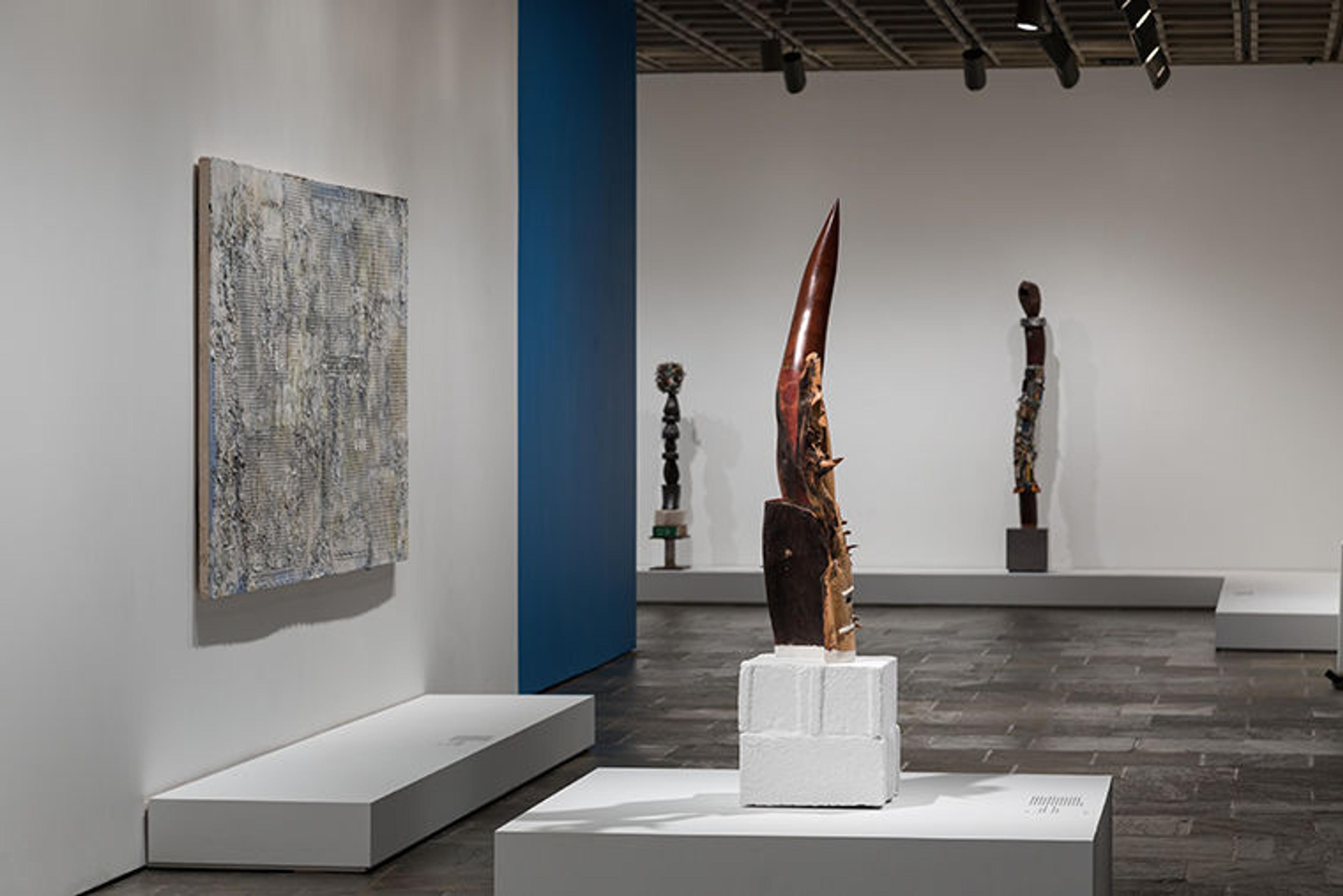
Odyssey: Jack Whitten Sculpture 1963–2017. Curated by Kelly Baum and Katy Siegel, presentation assisted by Meredith Brown, exhibition design by Fabiana Weinberg.
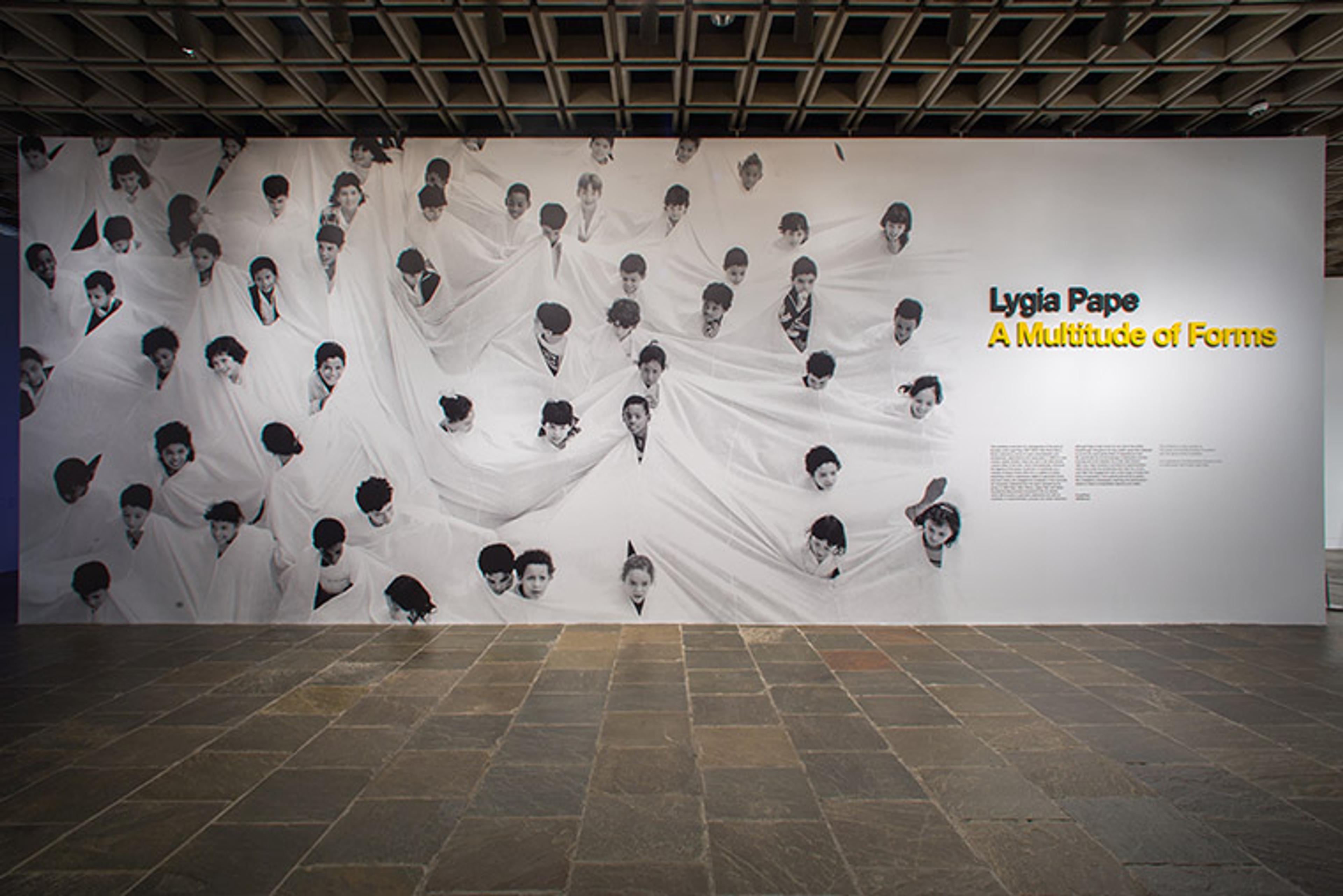
Lygia Pape: A Multitude of Forms. Curated by Iria Candela, exhibition design by Michael Langley.
Kelly Baum on Delirious: Art at the Limits of Reason, 1950–1980
Much of what makes The Met Breuer such an exciting setting for installations is its distinctive, very charismatic architecture. For Delirious: Art at the Limits of Reason, 1950–1980, exhibition designer Zoe Florence took as her point of departure the gridded design found in Breuer's suspended ceiling and stone floors. The grid is in many ways the very epitome of all that the artists in Delirious rebelled against: certainty, stability, and rationality. With this in mind, Florence set almost every wall in the exhibition at an oblique angle, creating a dynamic, electrifying labyrinth that perfectly complemented the delirious art on view and catalyzing a kind of debate with Breuer's grid.
Brinda Kumar on Nasreen Mohamedi
For this retrospective, we designed the exhibition spaces to follow the progression of the artist's career. The installation of Mohamedi's drawings on long, collaterally placed, lightly tinted grey walls created a tightly directed path of movement that tracked the evolution of her oeuvre. At select intervals, these were intersected by walls bearing her photographs (hued a slightly deeper shade of grey), to make evident the shared vocabulary and sensibility across these mediums. Ever present was the modernist grid in the form of Breuer's concrete gridded ceiling. On the one hand, the grid was reminiscent of Mohamedi's preoccupation with this structure (most evident in her use of graph paper), but its overarching presence, distorted through visual perspective, also served to underscore the artist's own oblique and idiosyncratic approach to the grid.
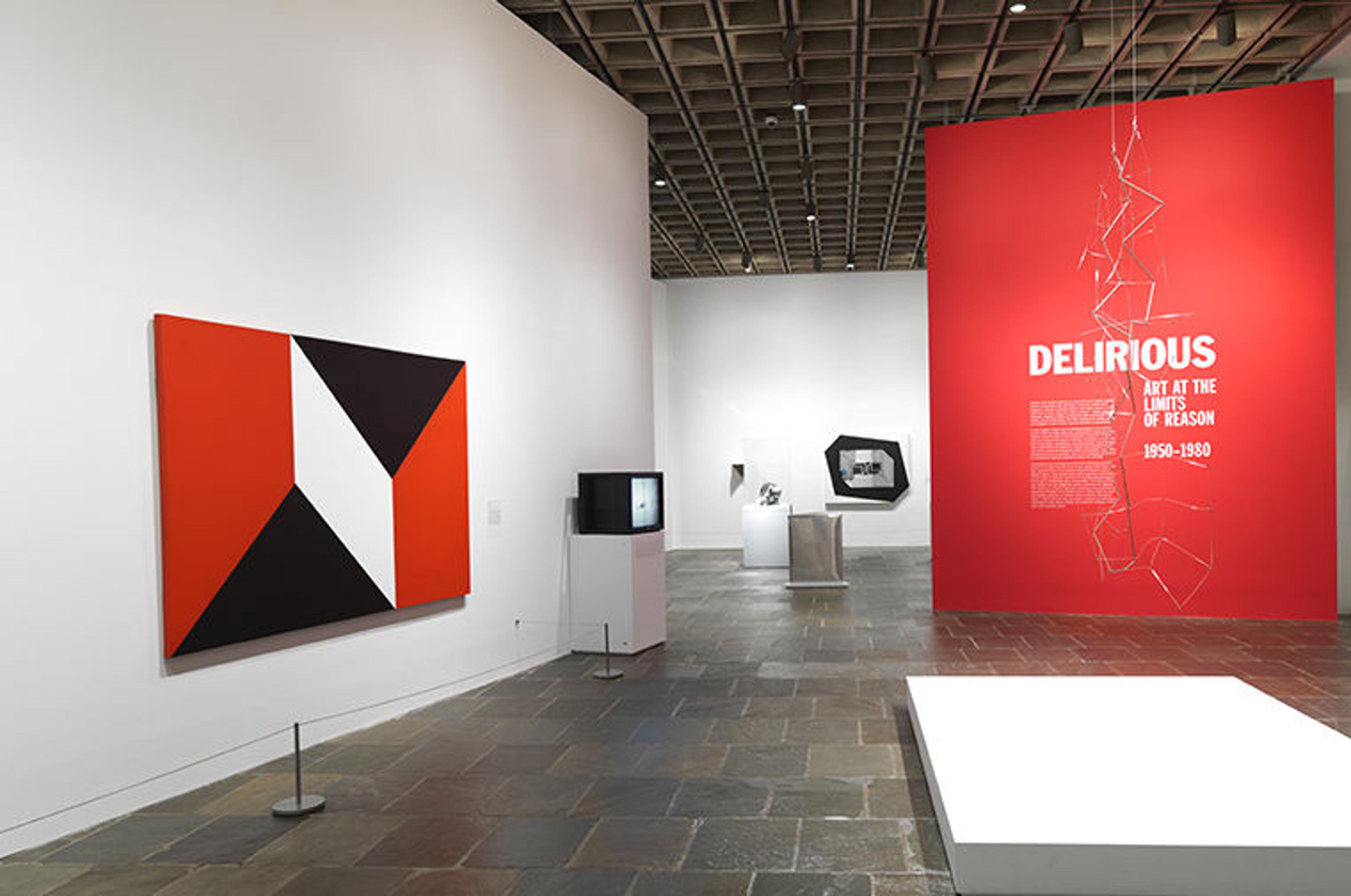
Delirious: Art at the Limits of Reason, 1950–1980, Curated by Kelly Baum, exhibition design by Zoe Florence.
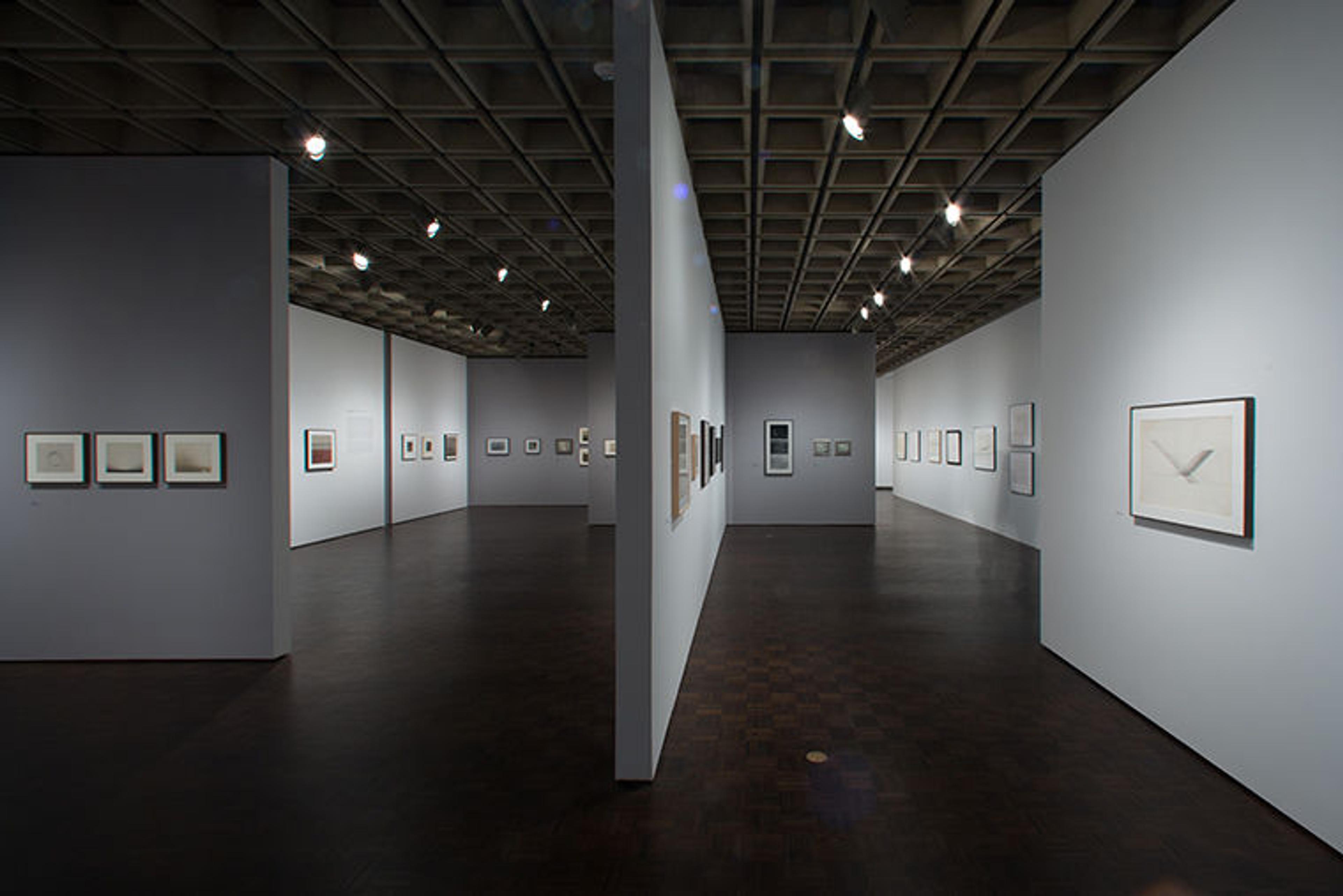
Nasreen Mohamedi. Curated by Sheena Wagstaff, Roobina Karode, and Manuel J. Borja-Villel, presentation assisted by Brinda Kumar, exhibition design by Zoe Florence.
Jeff Rosenheim on diane arbus: in the beginning
Critical to the success of this exhibition was the innovative design created for the second floor of the iconic Breuer building, with its column-free room and hanging, gridded, concrete ceiling. The show presented the photographs in a nonhierarchical manner: it had no traditional beginning, middle, or end, and the sculptural design encouraged visitors to follow their own paths through the exhibition, confronting the subjects in the photographs one-on-one, just as the artist did herself when she made her work on the streets of the city. The Breuer building and the special exhibition concept gave us this opportunity to create a design that could not have been achieved in the Museum's main building—or anywhere else.
Shanay Jhaveri on Phenomenal Nature: Mrinalini Mukherjee
Manifest in Mrinalini Mukherjee's commanding fiber sculptures is an audacious subversion of modernist form, the coalescing of extravagant bends and folds with a rigorous symmetry. The sensuous effect of such a daring paradox I believed would only be further enhanced by the emphatic and very formal architectural details of The Met Breuer. Mukherjee once quipped, "I make sculptures that need to be installed." It would seem that Marcel Breuer orchestrated the perfect stage set for her first international outing.
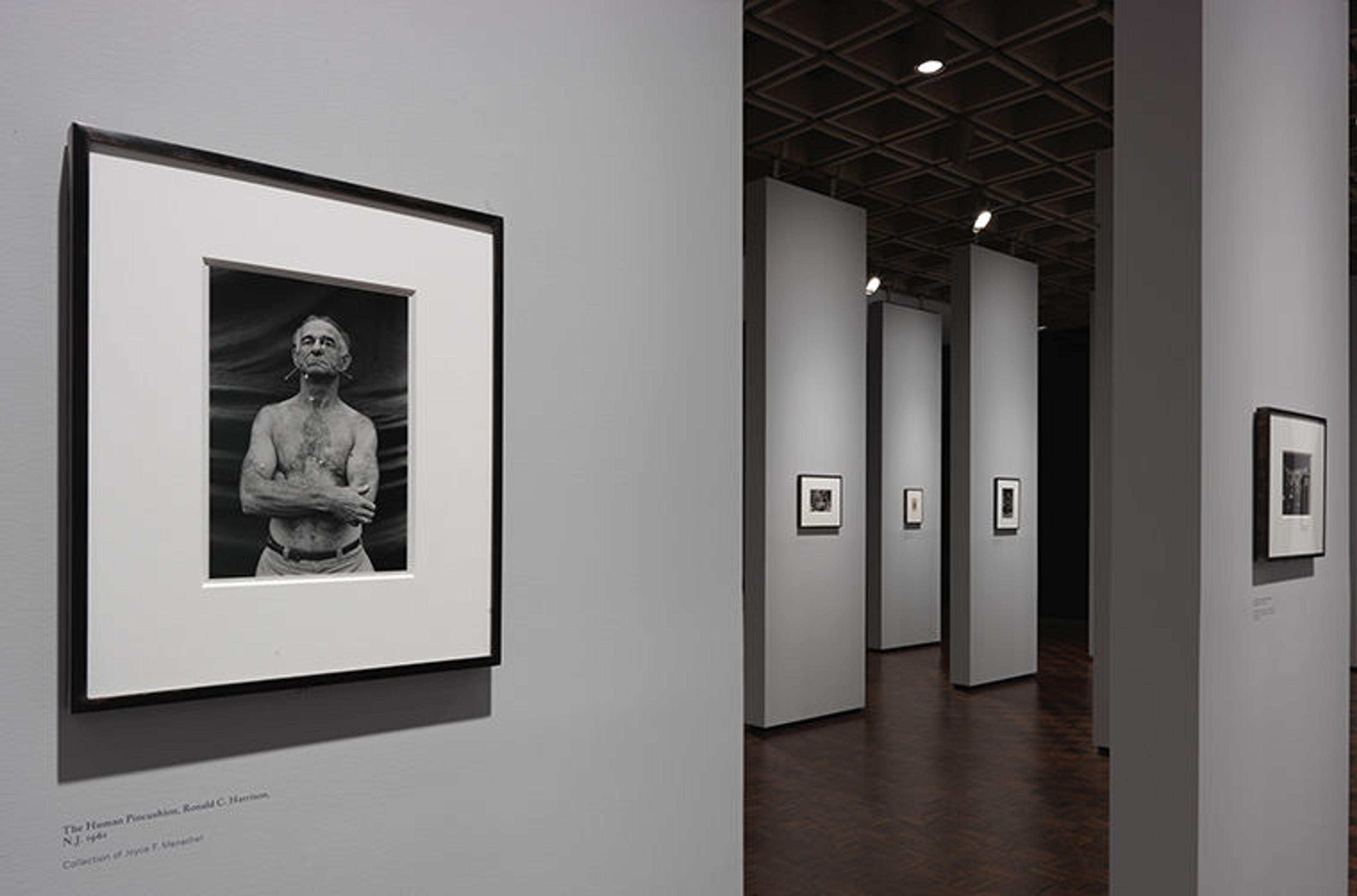
diane arbus: in the beginning. Curated by Jeff Rosenheim, exhibition design by Brian Butterfield.
Mrinalini Mukherjee Phenomenal Nature
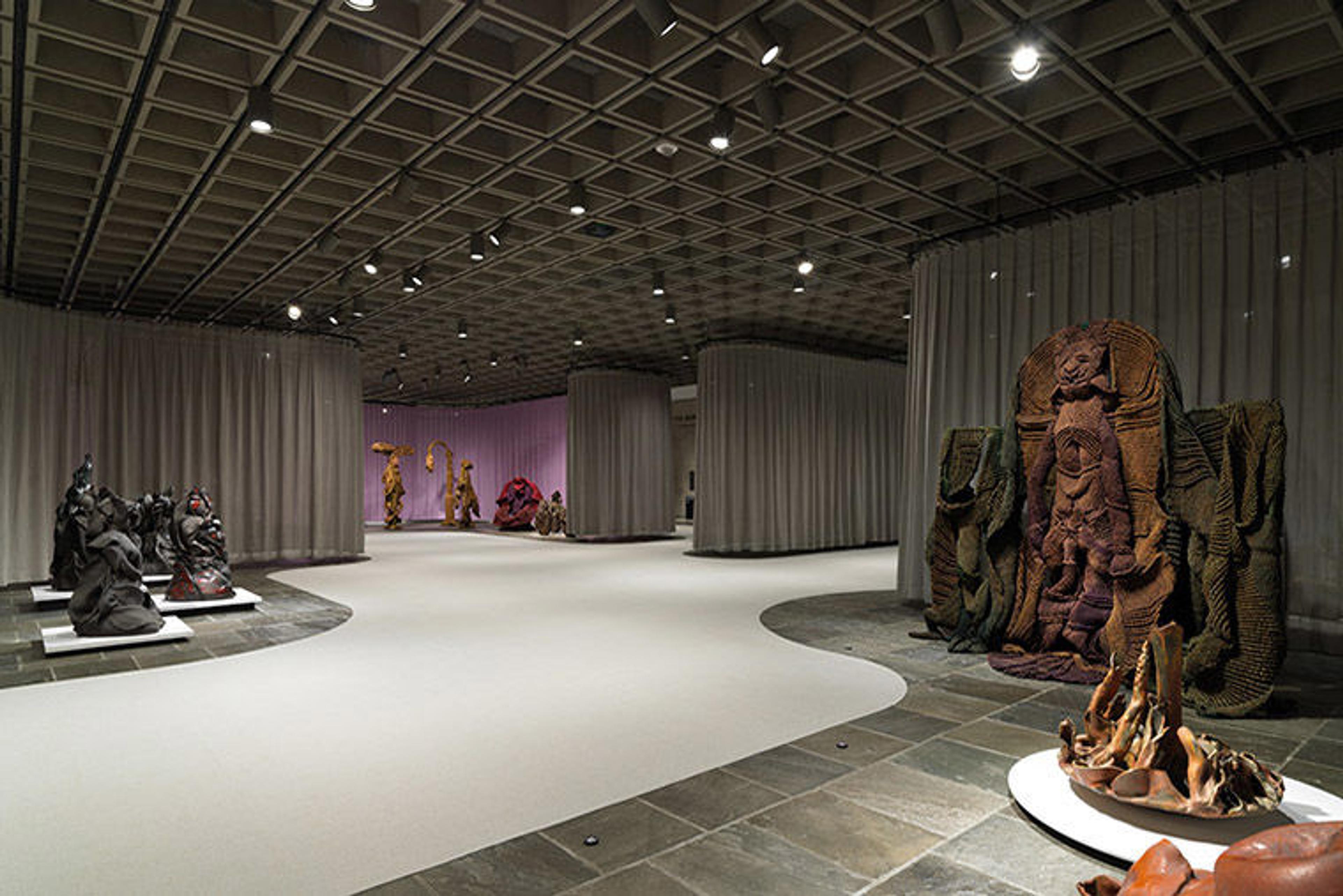
Phenomenal Nature: Mrinalini Mukherjee. Curated by Shanay Jhaveri, exhibition design by Alejandro Stein.
Brinda Kumar on Like Life: Sculpture, Color, and the Body (1300–Now)
For this thematic exhibition, where the proposition of the connection of certain ideas and artistic tactics across time and geographies was salient, the exhibition design deliberately emphasized the possibilities of long sight-lines. Given that this was an exhibition devoted to figurative sculpture, the design of the exhibition could largely dispense with walls (which may have been necessitated in a show with more paintings or drawings, for instance). Instead, translucent white fabric partitions outlined the thematic zones and created opportunities for ghostly presences and veiled connections between works.
The absence of walls also allowed our designers to conceive of new strategies for object labels; in Like Life, these custom made clear acrylic plaques, a novel strategy, were placed on the floor, often at the foot (quite literally!) of sculptures in a manner that minimally impeded the visual encounter with the work while not obscuring the distinctive Breuer stone floor.
Ian Alteveer on Vija Celmins: To Fix the Image in Memory
For Vija Celmins's retrospective at The Met Breuer in autumn 2019, I found one of the most beautiful features of the show to be the extraordinary synergy of her work with the building's architecture. While some may see Breuer's design as potentially rigid or overpowering, instead I thought the flexibility of the space and the sensual materiality of its construction was a wonderful complement to Celmins's particular focus on the presentness of her own chosen materials—whether paint or graphite or charcoal. That singular building embraced this artist's practice—much as it had for so many other projects we presented there—with the grace and rigor the work so keenly deserves.

Like Life: Sculpture, Color, and the Body (1300–Now). Curated by Sheena Wagstaff and Luke Syson, with Brinda Kumar and Emerson Bowyer, assisted by Elyse Nelson, exhibition design by Michael Langley.
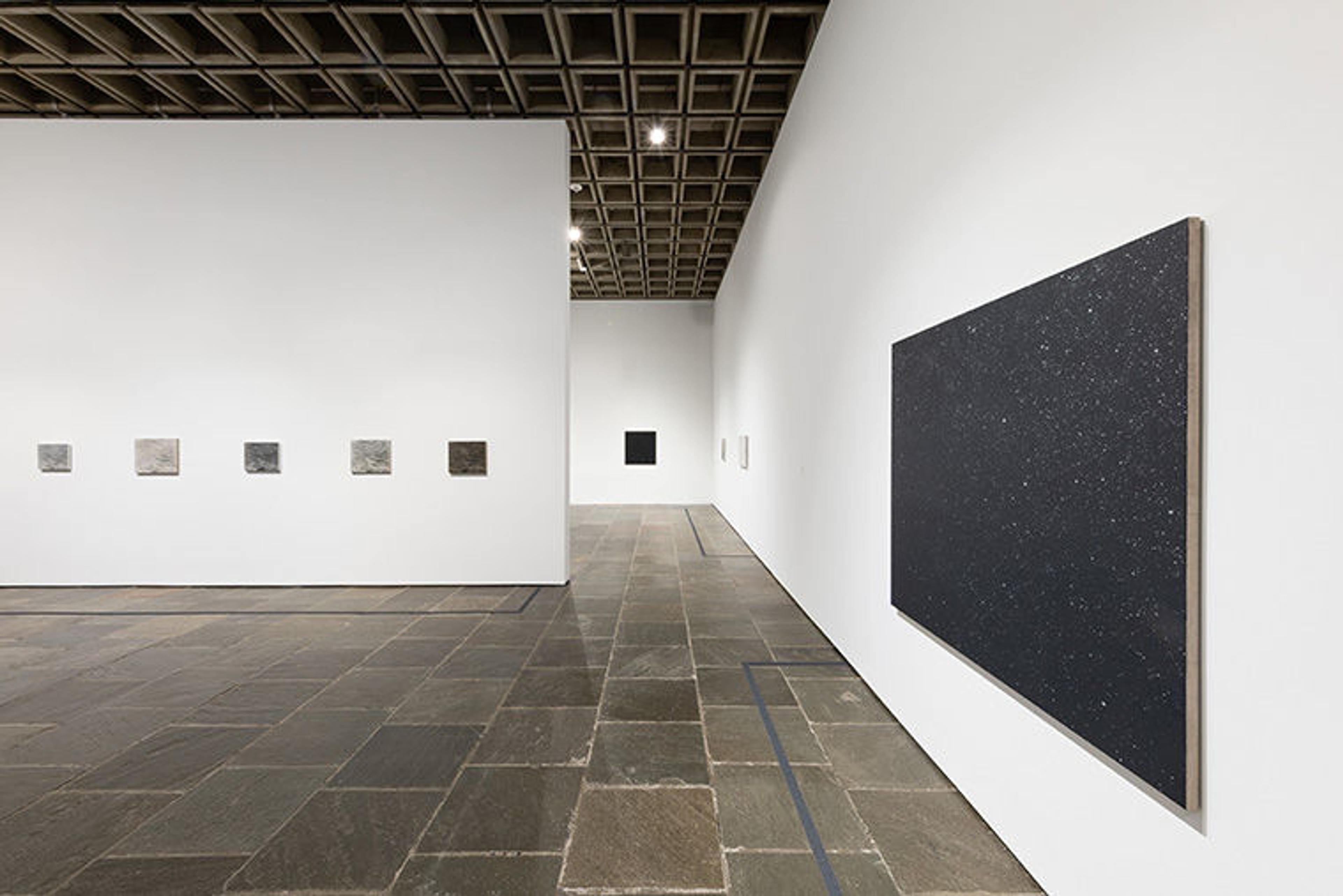
Vija Celmins: To Fix the Image in Memory. Curated by Gary Garrels and Ian Alteveer, with Meredith A. Brown and Nancy Lim. exhibition design by Zoe Florence.
Did you have the chance for your own goodbye? If you missed the last exhibition at The Met Breuer, Gerhard Richter: Painting After All, you're not alone. It was only up for nine days. Regardless, you can always take a virtual tour here, complete with a bonus: the music soundtrack composed by one of my favorites, Arvo Pärt. If it has to be a bittersweet goodbye, then at least we get a party favor.
To further explore the exhibitions and events the building was home to, please visit our Met Breuer archive.
